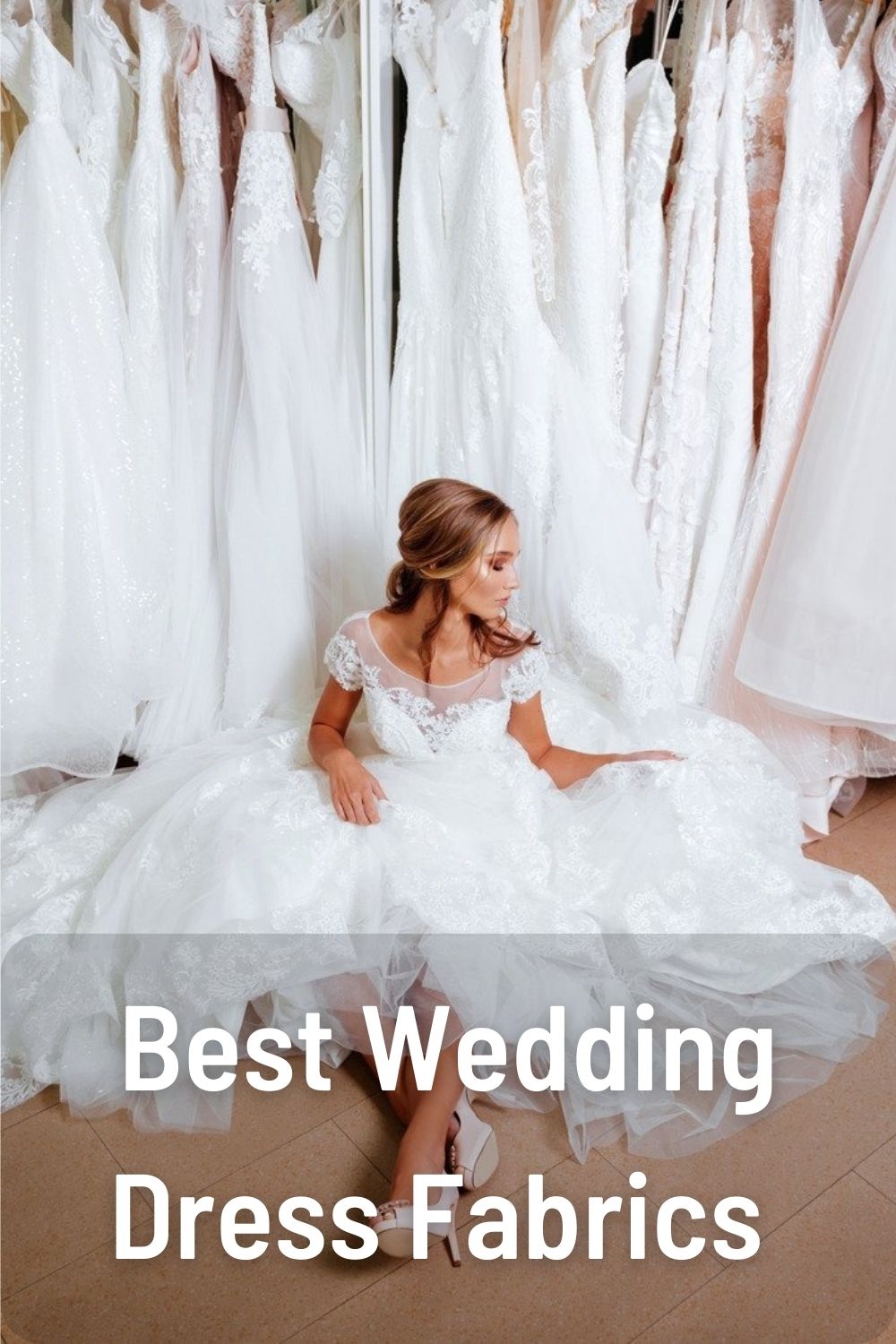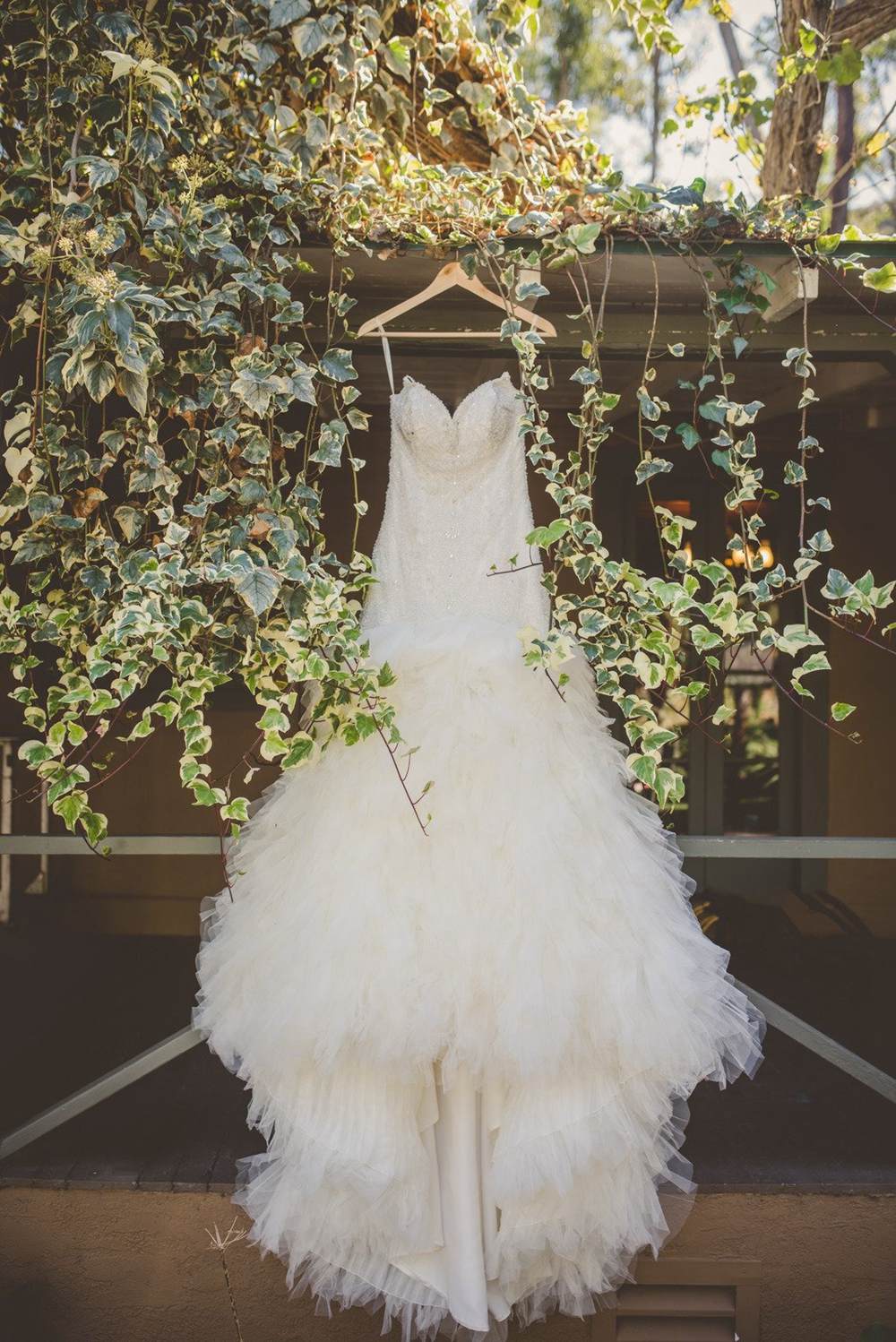
Choosing the perfect wedding dress fabric is one of the most important decisions when planning your dream gown. The fabric you select will impact the overall look, feel and flow of your dress. From luxurious silks to romantic lace, there are many wedding dress fabrics to consider that complement different styles.
This complete guide covers the most popular and versatile wedding dress fabrics available. We’ll explore the characteristics of each fabric along with pros and cons to help you select the best option for your wedding vision.
Table of Contents
Silk
Silk is one of the most common and coveted wedding dress fabrics. Available in a range of weights and varieties, silk offers an unparalleled elegant drape and luxurious sheen.
Some top types of silk fabrics for wedding dresses include:
Chiffon
This lightweight, sheer fabric has a delicately textured surface and flowing drape. Silk chiffon works beautifully for skirts, overlays and sleeves.
Pros
- Light and airy look
- Soft and romantic
- Sheer finish
Cons
- Wrinkles easily
- Can be delicate
Charmeuse
With a satiny face and matte back, charmeuse silk has a lustrous look. This medium weight fabric is popular for form-fitting gowns.
Pros
- Rich, lustrous appearance
- Drapes nicely over curves
- Comfortable to wear
Cons
- Wrinkles easily
- Shows imperfections
Crepe de Chine
Crepe de Chine has a slightly textured crinkled surface. This fabric is lightweight yet holds its shape nicely. It works well for flowy, minimalist styles.
Pros
- Beautiful drape and movement
- Maintains shape well
- Lightweight and comfortable
Cons
- Wrinkles easily
- Can be sheer
| Fabric | Weight | Uses |
|---|---|---|
| Chiffon | Lightweight | Skirts, overlays, sleeves |
| Charmeuse | Medium | Form-fitting gowns |
| Crepe de Chine | Lightweight | Flowy, minimalist styles |
Lace
Romantic and intricate, lace is a traditional choice for wedding gowns. It comes in a variety of patterns, weights and qualities. High quality lace with delicate detailing can elevate any wedding dress design.
Popular types of lace for wedding dresses:
Alençon Lace
Alençon features an intricate floral pattern outlined with a fine cord. This French lace has a light, sheer quality perfect for overlay designs.
Pros
- Delicate and intricate detailing
- Lightweight and sheer
- Timeless romantic style
Cons
- Expensive
- Runs and snags easily
Chantilly Lace
This lace features an overall floral pattern with a web background. The intricate designs and scalloped edges create beautiful dimension.
Pros
- Intricate floral patterns
- Lovely scalloped edges
- Dramatic and textured look
Cons
- Snags easily
- More casual vibe
Guipure Lace
Guipure features a floral pattern with open sections in between. This gives it an airy, romantic vibe. It’s available in both light sheers or thicker embroidered lace.
Pros
- Airy, open look
- Intricate patterns
- Great for accents and overlays
Cons
- Less durable than other laces
- Limited style options
| Type | Features | Uses |
|---|---|---|
| Alençon | Floral outlined in cord | Light overlays |
| Chantilly | Floral pattern, web background | Textured gowns |
| Guipure | Floral with open sections | Accents and overlays |
Satin
Satin has a signature smooth, lustrous surface and opulent drape. It’s available in a range of weights. Light silky satins to thicker duchess satins work beautifully for wedding gowns.
The main types of satin for wedding dresses include:
Duchess Satin
This is a heavier weight satin with a luxurious drape. Duchess satin holds shapes well, making it ideal for structured gowns.
Pros
- Luxurious look and feel
- Holds its shape
- Structured styles
Cons
- Expensive
- Wrinkles easily
Slipper Satin
With a smooth surface and gorgeous sheen, this lightweight satin moves fluidly. It’s perfect for draped gowns.
Pros
- Lightweight and fluid
- Lovely drape
- Affordable option
Cons
- Wrinkles easily
- Won’t hold shape
Charmeuse
Already mentioned above, charmeuse satin drapes beautifully for slim, form-fitting styles.
Pros
- Clings to curves
- Rich luster
- Drapes smoothly
Cons
- Wrinkles easily
- Shows imperfections
| Type | Weight | Uses |
|---|---|---|
| Duchess | Heavyweight | Structured gowns |
| Slipper | Lightweight | Draped gowns |
| Charmeuse | Medium | Form-fitting gowns |
Organza
Organza has a crisp, structured drape. This sheer fabric comes in silk, polyester or nylon. It’s ideal for adding volume, texture and dimension through layered full skirts and overlays.
Pros
- Crisp, structured texture
- Sheer
- Holds volume well
Cons
- Wrinkles easily
- Can overwhelm delicate designs
Tulle
Similar to organza, tulle is a thin, sheer netting fabric. It has a subtle crisscross texture and creates dreamy volume when layered. Tulle is perfect for underskirts, overlays and veils.
Pros
- Lightweight and airy
- Ethereal volume
- Soft netting texture
Cons
- Wrinkles easily
- Needs layering to avoid flimsiness
Jersey
Jersey is a soft, stretchy knit fabric that drapes smoothly over the body. Matte jerseys in silk, cotton and micro modal have become popular lightweight wedding dress options.
Pros
- Soft, stretchy and comfortable
- Hugs curves
- Affordable option
Cons
- Casual vibe
- Prone to wrinkles
- Won’t hold shape
Linen
Linen is a natural fabric made from flax that has an earthy, organic texture. It works beautifully for casual outdoor weddings and beachy elopements.
Pros
- Natural fiber
- Textured look
- Relaxed vibe
Cons
- Wrinkles easily
- Informal aesthetic
Polyester
Polyester is a synthetic fabric available in different weights and varieties. It’s a more affordable alternative to premium natural fabrics. Polyester crepe, chiffon and charmeuse can mimic the drape and feel of other wedding dress fabrics.
Pros
- Very affordable
- Holds shape well
- Easy to care for
Cons
- Lacks luxury of natural fibers
- Heat sensitive
Other Fabrics
Some other less common wedding dress fabric options include:
- Damask: Features decorative woven patterns, great for structured styles
- Brocade: Intricate jacquard weave with ornate designs, very formal
- Velvet: Plush pile gives it a luxe, vintage vibe
- Metallic Lace: Sparkling accents and overlays for glam gowns
There are no limits on fabrics for your dream wedding dress. Consider the style you envision, time of year and venue when selecting the options that speak to you. Mixing fabrics like lace over satin or chiffon gives you the chance to layer beautiful textures and really make your gown one-of-a-kind.
Key Factors When Choosing Wedding Dress Fabrics

With so many fabrics to select from, keep these key factors in mind as you choose your perfect wedding dress materials:
Season
Lighter fabrics like chiffon and lace work well for spring and summer weddings, while satin and velvet are great for fall and winter ceremonies.
Venue
Outdoor and beach weddings pair nicely with casual fabrics like cotton and linen. For formal church or ballroom weddings, go for luxe fabrics like silk, brocade or sequined lace.
Silhouette
The overall silhouette you want will help determine the best fabric. Structured fabrics like duchess satin and damask work for mermaid and trumpet styles, while softer fabrics like chiffon and charmeuse flow beautifully in A-line and sheath silhouettes.
Budget
If budget is a main concern, polyester and synthetics allow you to mimic the look of pricier natural fabrics for less. For a high-end splurge, silk is always a luxurious choice.
Personal Style
Most importantly, choose fabrics that align with your personal style, vision and wedding vibe. Laid-back brides may love how linen looks and feels, while glamorous brides will shine in sequins and luxe brocade.
How to Care for Wedding Dress Fabrics
Caring for your wedding dress properly is key to preserving its beauty. Follow these tips specific to different fabric types:
Silk
- Dry clean only to avoid shrinking and damage
- Steam or press on low when needed
- Store in cool, dark place
Lace
- Hand wash or dry clean delicately
- Lay flat to dry away from direct sunlight
- Store flat in acid-free tissue paper
Satin
- Dry clean recommended
- Use steamer instead of iron
- Roll and store off floor away from moisture
Chiffon
- Dry clean or hand wash gently
- Hang to dry to avoid creases
- Refold and store flat
Tulle
- Hand wash or dry clean separately
- Reshape while damp and air dry
- Store flat away from pressure
No matter what fabric you choose, always follow the manufacturer’s care instructions. Proper storage, cleaning and handling will keep your gown looking its absolute best on the big day!
Frequently Asked Questions
What is the most popular fabric for wedding dresses?
Silk is hands down the most popular wedding dress fabric. Luxurious silk options like charmeuse, chiffon, crepe de chine and satin are used in many designer and high-end bridal gowns.
What fabric looks most expensive?
Luxury natural fibers like silk always look the most opulent and expensive. Heavier satins like duchess also drape beautifully. Delicate French lace like Chantilly, Alençon and Calais give an elevated, couture look.
What fabric is good for a beach wedding?
More casual, lightweight fabrics work best for beach ceremonies in the sand and sun. Great options include chiffon, crepe, jersey and linen. Avoid heavy satins or velvets that can weigh down and get messy at the beach.
What fabric is best for a winter wedding?
Look for warmer, substantial fabrics for winter weddings. Velvet, brocade, damask and heavier satins help you stay cozy while still looking elegant. Fleece and wool also pair nicely with winter themes.
Should you avoid polyester for wedding dresses?
Not necessarily – it depends on your budget and preference. Many bridal designers use poly-crepe that mimics silk for more affordable gowns. Polyester chiffon and charmeuse can also give the look of silk for less. Just be sure it’s high quality.
Final Tips for Finding Your Fabulous Wedding Dress Fabric
- Look through bridal magazines and Pinterest for inspiration on your favorite fabrics and silhouettes.
- When shopping, be sure to touch and feel fabrics to understand how they move and flow.
- Ask your bridal consultant for recommendations on fabrics that pair well with your venue, season and style.
- Don’t be afraid to pick more than one fabric – mixing and matching can create a really unique look.
- Order swatches first if you fall for a designer gown online so you can see and feel fabrics.
Finding the perfect wedding dress fabric for your vision and needs takes time and thought. Enjoy exploring all of the beautiful options, and you’re sure to discover wonderful textures that bring your gown to life!